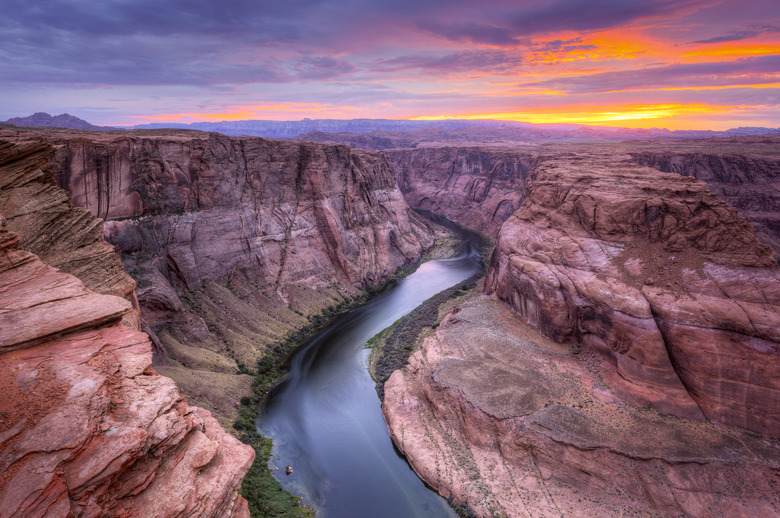Factors Affecting Landforms
Landforms are individual expressions of terrain, from mountain peaks to level, featureless plains. While they sometimes seem stolid and inviolable, they are built up and destroyed by physical and chemical forces on a scale of time often dizzying to the human mind. From winds and floods to plant roots, these forces act on the natural characteristics of the constituent rocks, under the strong influence of regional climate.
Climate
Climate
Climate is a major sculptor of landforms. One of generous precipitation often induces extensive erosion through plentiful runoff and stream flow. A moist, cool climate can even favor the formation of glaciers in mountains and high latitudes. Given the proper conditions, these massive ice bodies advance and heavily impact the terrain. A whole slew of landforms, from moraines and eskers to drumlins, kettles and tarns, owe their existence to the erosion and deposition of glaciers. In the cold of a mountaintop, water freezes and thaws regularly in the cracks of rocks, a process of mechanical weathering that, over time, may split boulders apart. In arid climates, water still performs much landform-building through erratic flash floods and deluges, while wind laced with silt and sand abrades rock over time.
Rock Type
Rock Type
The kind of rock from which a landform is built certainly affects its character. Differences in composition mean certain rock types are more or less resistant to erosion and weathering than others. As water and other agents strip away less resilient layers, more durable rock masses are left as outcrops, ridges or summits. Examples include monadnocks, which are isolate domes of resistant rocks, as well as mesas and buttes, which are flat-topped hills capped with a resilient layer. The volatility of limestone when reacting with acidified water through chemical weathering creates wild "karst" landscapes like extensive subterranean caverns.
Erosion, Deposition, Weathering
Erosion, Deposition, Weathering
Moving water, thawing ice, hard winds, gravity–all these are physical agents of erosion, weathering and deposition that act upon exposed rock and sediments to produce landforms. Running water at a high gradient scours out canyons, gorges, gulches and ravines. A mature river meanders across the broad floodplain it has built, forming oxbow lakes and terraces. The rock fragments dashed apart by mechanical weathering drift downslope via gravity's tug to form aprons of talus and scree along the base of cliffs. In a desert mountain range, occasional events of high-flow water build up alluvial fans at the outlets of canyons.
Biological Influence
Biological Influence
Living things are, of course, heavily affected by landforms in their selection of habitat and search for resources. But organisms also, in turn, help mold terrain features. A pine tree growing from bare rock wedges apart crevices with its seeking roots, which may shed flakes or chunks of rock and open space for the accumulation of soil. Grasses, shrubs and trees will stabilize sand dunes, whereas de-vegetated dunes actively roam under the influence of wind.
Cite This Article
MLA
Shaw, Ethan. "Factors Affecting Landforms" sciencing.com, https://www.sciencing.com/factors-affecting-landforms-8242248/. 13 March 2018.
APA
Shaw, Ethan. (2018, March 13). Factors Affecting Landforms. sciencing.com. Retrieved from https://www.sciencing.com/factors-affecting-landforms-8242248/
Chicago
Shaw, Ethan. Factors Affecting Landforms last modified August 30, 2022. https://www.sciencing.com/factors-affecting-landforms-8242248/
